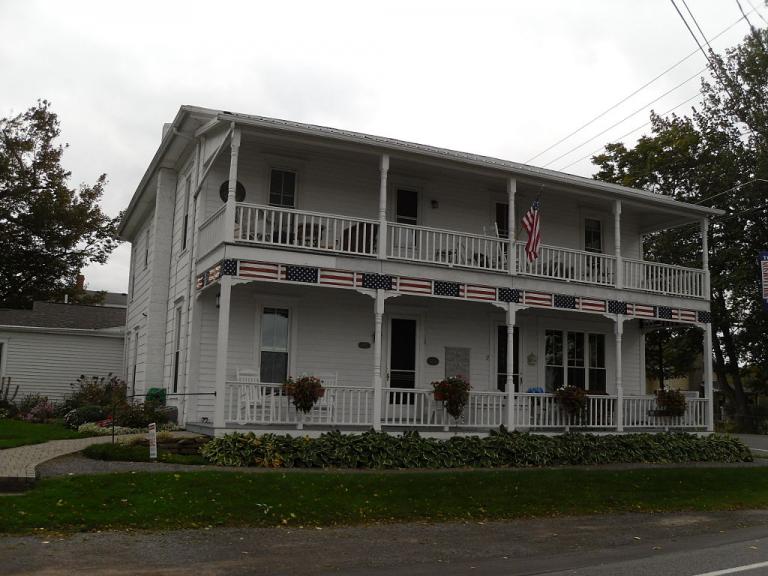If you find errors OR have additional information about this site, please send a message to contact@waynehistorians.org.
Pultneyville Historic District
| Historic Site #: | 14-001 (Exists) Type: A2 | Town: | Williamson | ||
| Site Name: | Pultneyville Historic District | GPS Coordinates: | 43.280119, -77.184798 | ||
| Address: | 4130 Mill St. Pultneyville New York it includes sections of Mill St., Washington St. & Jay St., P-ville | ||||
| Description: | |||||
| Designation achieved in 1985, due to the efforts of Williamson Town Historian Chester Peters and historically-minded volunteers. | |||||
 |
| From Wikipedia |
| Historic narrative: | |||||
The Pultneyville Historic District was listed on the National Registry of Historic Places on September 11, 1985. This lakeside historic district on the south shore of Lake Ontario is comprised of an architecturally significant concentration of 19th century residential architecture, which includes 35 properties contributing primary structures and 18 contributing outbuildings located within the historic core of the hamlet of Pultneyville in the Town of Williamson. A variety of popular 19th century American architectural styles are represented including Federal, Greek Revival, Italianate, and Second Empire. The scope and design of these buildings reflects the hamlet's early to mid-19th century prominence as a prosperous Great Lakes shipping port and market for the local farmers. Included in this unique collection of architectural styles are the homes of lake captain and boat builder, Horatio N. Throop and local miller, James B. Craggs. (Both residences pictured here). Throop’s Federal style cobblestone house was built in 1832 by Throop and his brother Washington. The house stands across the road from the Pultneyville harbor where Throop docked his steamboats. Built circa 1860-1870 by Craggs and his wife Marietta, the Cragg’s residence is in the Second Empire style topped by a Mansard roof constructed of slate. These two homes are just a sampling of the beautiful architecture found in the Pultneyville Historic District. Then-Town Historian Chester Peters was instrumental in facilitating creation of this Historic District. | |||||
Wikipedia
Living Places web site
History of Pultneyville Part 1 YouTube Video
